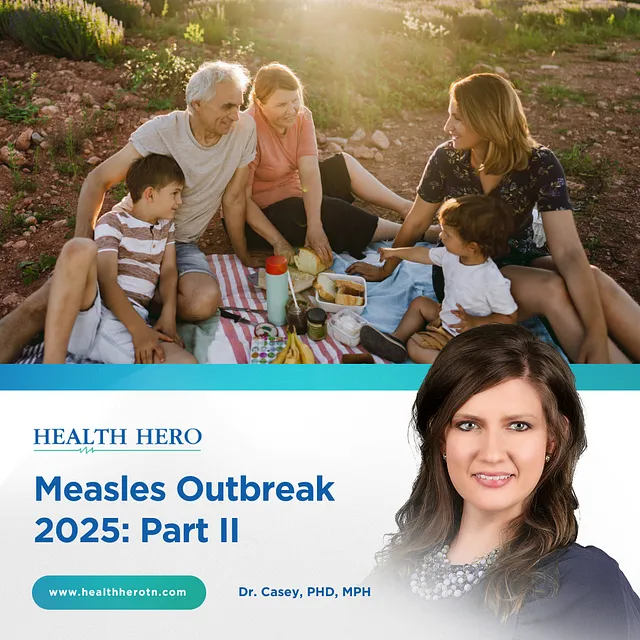Fact: Vaccinations have been a cornerstone of public health for decades, saving between four to five million lives worldwide each year by preventing the spread of infectious diseases. Despite this, several myths and misconceptions lead some to delay or avoid vaccinations. Misinformation can have serious consequences, both for individuals and the wider community. We compiled the top five most common myths to help start the conversation and address concerns people may have about vaccines.
1. Myth: Vaccines Can Cause the Illness They’re Meant to Prevent
Fact: Vaccines contain weakened or inactivated parts of the germ, not the active virus, so they cannot cause the illness. Individuals might experience mild side effects, which are usually temporary and last from a few hours to a few days as the body builds immunity. These common reactions include redness, swelling, soreness, chills, fatigue, joint pain, headache, mild fever, and muscle aches, with children often being fussier than usual. Stress-related reactions like fainting, lightheadedness, and rapid breathing can also occur, particularly in those with a high fear of needles. The risk of experiencing severe illness from a vaccine-preventable disease is far higher than any rare vaccine side effect.
2. Myth: Vaccines Aren’t Necessary Anymore
Fact: This has been something of a growing concern lately, as some believe that vaccines are no longer necessary because many diseases have become rare, like polio or measles. In 2020, the global coverage of childhood vaccines dropped due to COVID-19, resulting in 23 million children missing out on routine immunizations — the highest number since 2009. This is concerning because infectious diseases can easily resurface, leading to outbreaks. The U.S. has recently experienced this, with clusters of measle cases popping up in several states, including one case reported in Tennessee, its first case in five years. If anything, getting vaccinated is more necessary than ever, so communities can build herd immunity and prevent these dangerous diseases from spreading.
3. Myth: Vaccines Are Full of Harmful Ingredients
Fact: Some worry that vaccines contain dangerous chemicals, such as mercury or formaldehyde. However, the amounts used in vaccines are minuscule and have been proven safe through extensive research. For instance, the mercury compound found in some vaccines (thimerosal) is harmless in the small quantities used, and it has even been removed from most vaccines as a precautionary measure. Every ingredient in a vaccine serves a specific purpose. Vaccines are designed to provide immunity by helping the body create antibodies against diseases. Certain ingredients ensure the vaccine remains safe and effective over time by preventing contamination and degradation. For instance, stabilizers like sugars and gelatin help maintain vaccine efficacy, while adjuvants such as aluminum salts enhance the body’s immune response. Regulatory agencies globally continue to monitor vaccine safety to ensure their ingredients are non-toxic.
4. Myth: Natural Immunity Is Better Than Vaccine-Induced Immunity
Fact: While natural immunity can develop after contracting a disease, it comes with significant risks. Diseases like measles, chickenpox, and whooping cough can lead to severe complications, including hospitalization and even death. Vaccination allows individuals to gain immunity without illness, providing a safer and more controlled way to protect against disease. When comparing natural immunity and vaccine-induced immunity, vaccines provide a higher, more robust, and more consistent level of immunity. A 2021 study by the Centers for Disease Control and Prevention (CDC) found that COVID-19 vaccines provided better protection than previous infections alone. The study showed that vaccinated patients were less likely to test positive for the virus among those hospitalized with COVID-like symptoms compared to those who had recovered from a prior infection months earlier.
5. Myth: Vaccines Cause Autism
Fact: This myth is the one that has gained the most traction due to it being part of a now debunked study in the late 1990s. This report falsely claimed a link between the MMR vaccine and autism. A big part of the reason this myth became popular is that children typically show the first signs of autism around the same age (12–18 months) that they receive vaccines like the MMR vaccine. This timing led some to mistakenly associate vaccines with autism onset. Since the release of the report, numerous large-scale studies have found no evidence of a connection between vaccines and autism. Trustworthy health organizations, including the World Health Organization (WHO) CDC, confirm that vaccines do not cause autism.
The Bottom Line: Vaccines Save Lives
Vaccines are among the most thoroughly researched and monitored medical interventions, and the benefits far outweigh the minimal risks. Extensive clinical trials, continuous surveillance, and rigorous safety protocols have ensured that vaccines are safe and effective. The risks of not being vaccinated are significantly higher. Unvaccinated individuals are more susceptible to contracting preventable diseases, many of which can lead to severe complications, long-term health issues, or even death. Don’t let that turn into regret when protection is within reach. Don’t wait until it’s too late — get vaccinated and protect yourself and your future self will thank you for making that decision.
Sources:
WHO: Vaccines and Immunization
WHO: Coronavirus disease (COVID-19): Herd immunity, lockdowns and COVID-19
WHO: Vaccines and immunization: Myths and misconceptions
WHO: Vaccines and immunization: Vaccine safety
National Library of Medicine: Exploring the Reasons Behind Parental Refusal of Vaccines
National Library of Medicine: Vaccination as a cause of autism — myths and controversies


